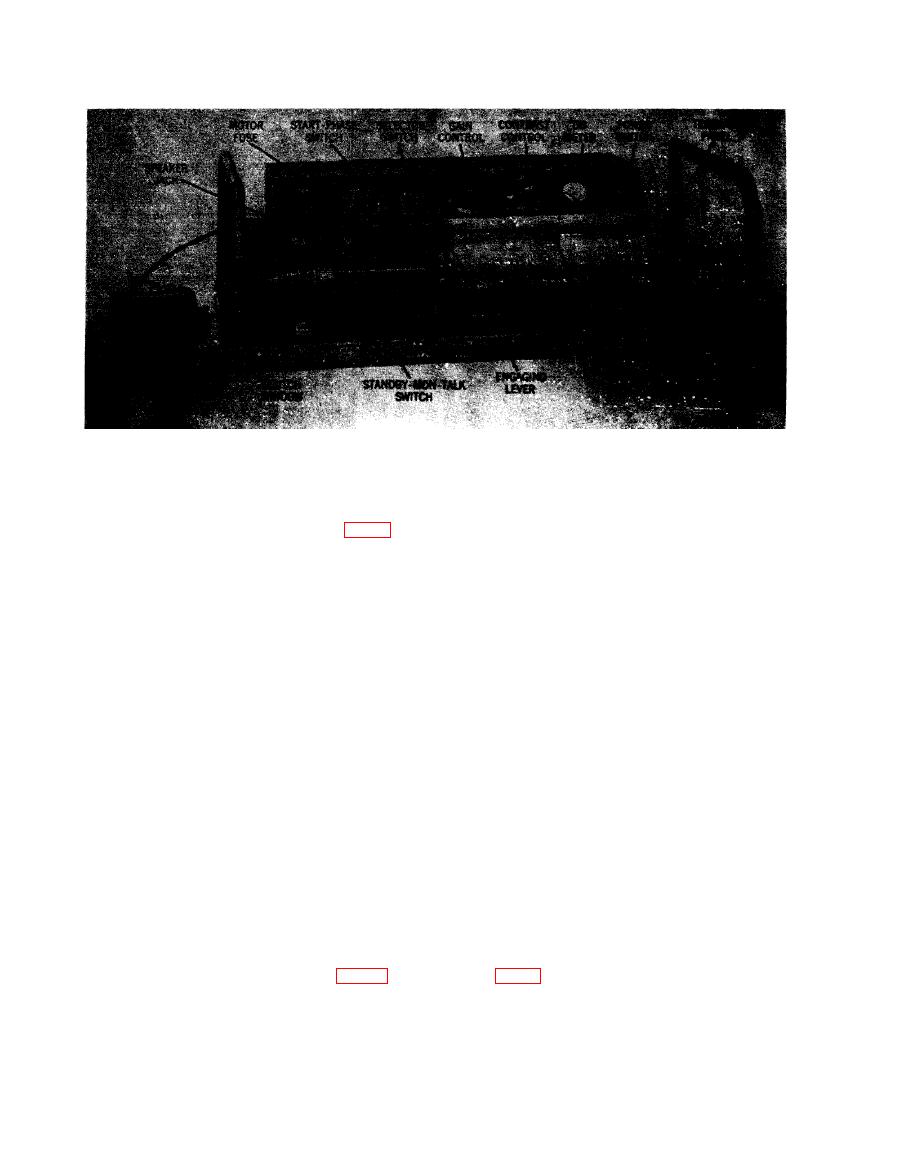
b. Drum Controls. Two mechanical controls
causing the drum to travel from right to
left during the scanning process. This
are located on the drum mechanism.
position is used during the actual trans-
(1) The clamp bar control knob (fig. 17) is
mitting or receiving of copy. When the
located on the right side of the rotating
drum. It is used to open and shut the
lever is pushed away from the operator,
it disengages the drum from the lead
clamps that hold copy to the drum and
screw so that the drum rotates but does
can be operated only when the motor is
not travel from right to left. The dis-
not running and the drum is not rotating.
This knob has three positions:
engaged position is used at all times
when copy is not actually being trans-
(a) Center position (both sides of the clamps
are fastened). This is the normal
mitted or received.
operating position when copy or record-
Warning: On Facsimile Transceivers
TT-1/TXC-1 and TT-1A/TXC-1, the
ing paper is securely fastened to the
guide arm of the engaging mechanism
drum during either transmitting or
may leave its track on the chassis of the
receiving.
transceiver if the drum is pushed to the
(b) Counterclockwise position (clamp is open
far left with the protective housing
on the side toward the operator). The
removed from the motor and clutch.
clamping bar is at the top of the drum.
This position is used only momentarily,
If this occurs, the drum will not feed
properly on the lead screw. In Facsimile
while inserting copy and preparing to
Transceivers TT-1B/TXC-1 and TT-
fasten it to the drum.
1C/TXC-1, a machine screw provides
(c) Clockwise position (clamp is open on the
side away from the operator). The
a stop to prevent the guide arm from
leaving the track.
clamping bar is at the top of the drum.
This position also is used only momen-
c. End-of-copy Limit Switch (S8). A pressure-
tarily, while fastening copy to the
sensitive switch is mounted on the left-hand
drum.
bearing block of Facsimile Transceiver TT-1F/
TXC-1 (fig. 16). The drum, in its extreme left-
(2) The drum engaging lever (fig. 16) is
hand excursion, will actuate this switch. This
located on the left side of the drum.
It is used to engage the half nuts on the
causes power to be removed from the synchronous
rotating drum with the lead screw,
drive motor and the amplified facsimile signal will


